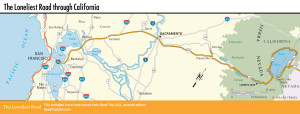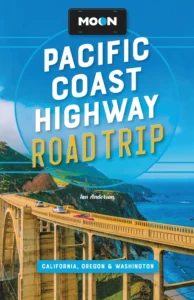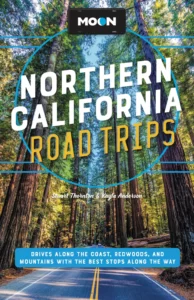Oakland to Berkeley
Oakland
Though it sometimes suffers in comparisons with its richer and better-looking sibling across San Francisco Bay, the hardworking city of Oakland (pop. 429,082) is a lively and intriguing place, with a nearly perfect climate and a proudly liberal political heritage. The main attraction for visitors is its waterfront Jack London Square, honoring the city’s favorite prodigal son. Covering a few blocks at the foot of Broadway, the complex contains a couple of good restaurants and nightclubs, a re-creation of the log cabin where Jack London lived when he was in the Yukon Territory, and, last but not least, the truly funky Heinold’s First and Last Chance Saloon. This rickety old saloon, serving a wide variety of good beer, is just about the only survivor from Oakland’s wild and woolly past. Jack London Square is pleasant to wander, with a handsome yacht formerly used by President Franklin D. Roosevelt, and ferries (around $14 round-trip) head across the bay to San Francisco.
Oakland’s other main draw is the excellent Oakland Museum of California (1000 Oak St., 510/318-8400, Wed.-Sun., $16), housed in a landmark modernist ziggurat on the east edge of downtown, a block from Lake Merritt. Inside, exhibits cover everything from California’s natural history to the photography of Dorothea Lange. An in-depth look at the state’s popular culture is highlighted by a lively display of Hollywood movie posters, neon signs, jukeboxes, and classic cars and motorcycles.
Berkeley
The intellectual, literary, and political nexus of the San Francisco Bay Area, left-leaning Berkeley (pop. 121,643) enjoys an international reputation that overshadows its suburban appearance. The town grew up around the attractively landscaped University of California campus, which, during the 1960s and early 1970s, was the scene of ongoing battles between “The Establishment” and unwashed hordes of antiwar, “sex, drugs, and rock ’n’ roll-crazed” youth. Today, while its antiauthoritarian traditions are less in-your-face, Berkeley still maintains a typical college town mix of cafés and vinyl stores, and its site is superb, looking out across the bay to the Golden Gate and San Francisco.
The 2-sq-mi (5-sq-km) University of California Berkeley campus sits at the foot of eucalyptus-covered hills a mile (1.6 km) east of the University Avenue exit off the I-80 freeway. Wander along Strawberry Creek, admiring the mix of neoclassical and postmodern buildings. Berkeley’s cacophonous main drag, Telegraph Avenue, runs south from the heart of campus in a crazy array of tie-dye and tarot.
There are dozens of great places to eat and drink in Berkeley, including one of the best breakfast joints on the planet, Bette’s Oceanview Diner (1807 4th St., 510/644-3230), two blocks north of the I-80 University Avenue exit at the center of a boutique shopping district. Berkeley also has many top-rated restaurants, including world-renowned Chez Panisse (1517 Shattuck Ave., 510/548-5525, reservations essential), birthplace of California cuisine, located in the heart of Berkeley’s gourmet ghetto. Chez Panisse is, not surprisingly, très cher, so mere mortals may decide to take advantage of the more affordable gourmet cheese, bread, and out-of-this-world pizzas made and sold across the street at The Cheese Board Collective (1512 Shattuck Ave., 510/549-3183), where the California cuisine revolution started way back in 1967.
If you want to take the slow road north from Berkeley, follow San Pablo Avenue (Hwy-123), the old US-40-Lincoln Highway-Victory Highway route, which winds uneventfully along the bay front through El Cerrito (birthplace of 1960s pop group Creedence Clearwater Revival) and industrial Richmond, where the new Rosie the Riveter National Historical Park preserves the waterfront’s vital World War II-era heritage.
California Travel Maps
















